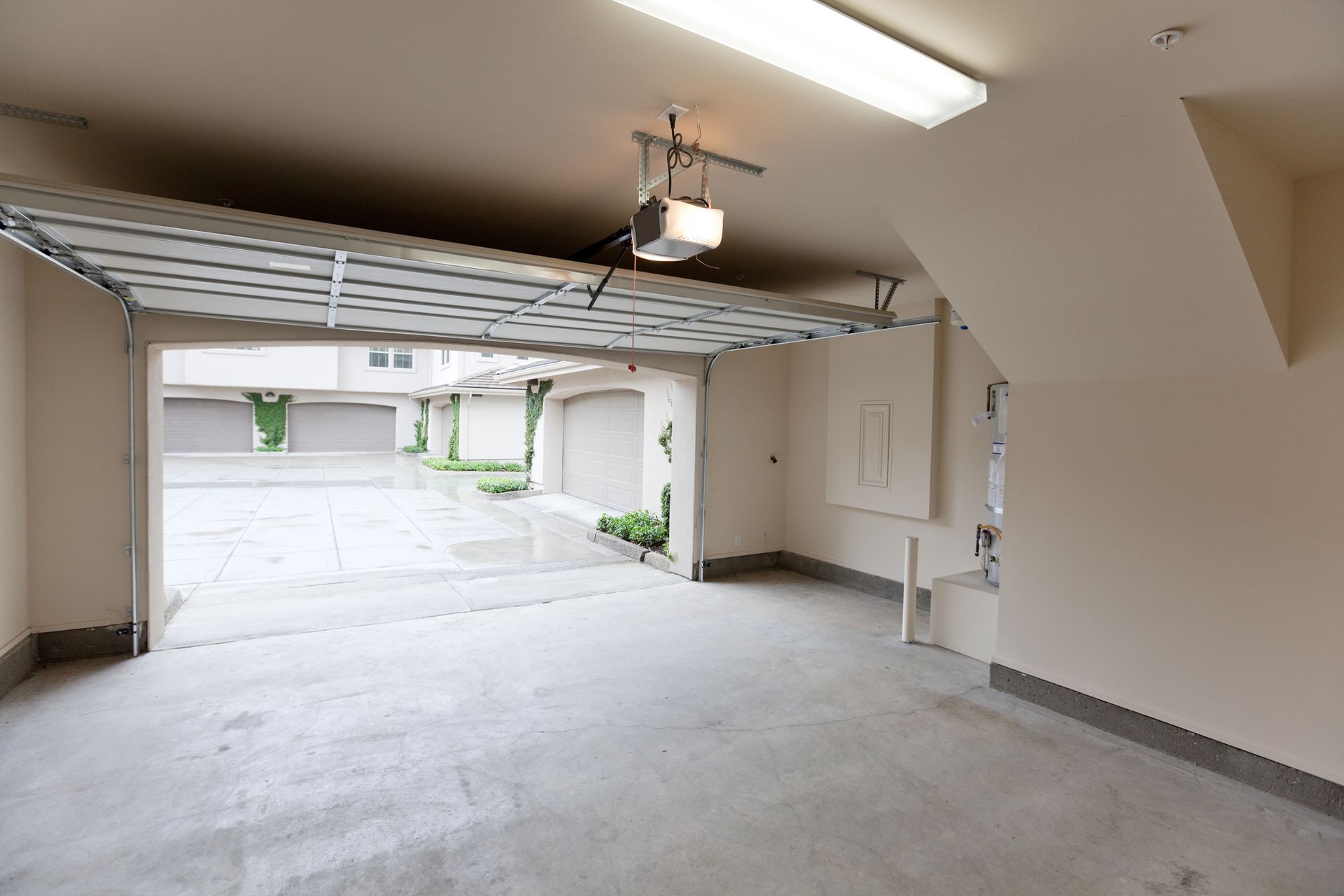Blog

By John Helmuth
•
January 4, 2024
Below is an overview of what to expect in the upcoming stages after receiving a estimate for your (roof, deck, siding, garage) project from Sunrise Builders: Review Your Estimate : Take a moment to review the estimate we’ve provided. If you have any questions or require clarification, feel free to reach out to John at 319-389-2257 or sunrisebuildersia@gmail.com Initial Consultation: Once you’re ready to proceed, we’ll schedule an initial consultation to dive deeper into your exterior home project. This meeting allows us to understand your specific requirements, preferences, and any adjustments needed to align the project with your vision. There is no charge for your initial consultation up to 1.5 hr. Contracts and Agreements: Upon finalizing the project plan, your revised and detailed estimate, with a signature line, serves as your contract. This document includes the scope of work, project timeline, costs, and any other relevant terms. You can take your time to review and once you’re comfortable, sign the agreement before the deadline to officially kick off your project. Project Commencement: With the contract signed, we’ll obtain the necessary building permits. Then mobilize our skilled team, and initiate the construction process. Our commitment to transparency means you’re always in the loop, and any unforeseen challenges will be promptly communicated. Project Handover: Upon successful completion, we’ll hand over the completed project to you. This includes all necessary documentation, warranties, and a walkthrough to ensure your satisfaction. Our commitment doesn’t end with the completion of the project. We offer post-project support to address any queries or issues that may arise after the handover. We appreciate your trust in us and look forward to turning your home's vision into reality. If you have any further questions or require additional information, don’t hesitate to reach out to us. Thank you, Sunrise Builders Team

By John Helmuth
•
December 11, 2023
We are thrilled to share that Sunrise Builders is now officially GAF CERTIFIED ! What does that mean? GAF is a distinguished leader in roofing and waterproofing materials in the US. Achieving GAF certification is no easy task, and as a roofing company, Sunrise Builders has met the rigorous criteria below: Satisfactory track record Ongoing professional training participation Commitment to using GAF roofing products on qualified roofs Proof of State licensing Insurance Coverage High rating with the Better Business Bureau What does it mean for you as a customer? At Sunrise Builders, our commitment to delivering top- notch service drove us to undergo the most prestigious roofing contractor training, following the highest standards in the country. GAF certification is very exclusive, awarded to less than 5% of roofing contractors in North America. Benefits for you: By choosing a GAF-certified roofing contractor, you benefit from our dedication to excellence. We are proud to offer one of the strongest warranties in the roofing industry - lifetime/50-year warranties with qualifying GAF products. This comes with peace of mind for you, ensuring that your investment is protected for decades to come. Our Dedication to You: Sunrise Builders is not just a roofing company . We are your dedicated partners in quality and satisfaction. Our GAF certification symbolizes our commitment to providing the best for our customers. Trust us to deliver superior craftsmanship, industry expertise, and the assurance that your roofing needs are met with the utmost professionalism. Your home deserves the best, and with GAF certification, Sunrise Builders has the tools to elevate your roofing experience to new heights. Choose excellence, choose confidence - call John from Sunrise Builders at (319) 389-2257 for a roof that stands the test of time.
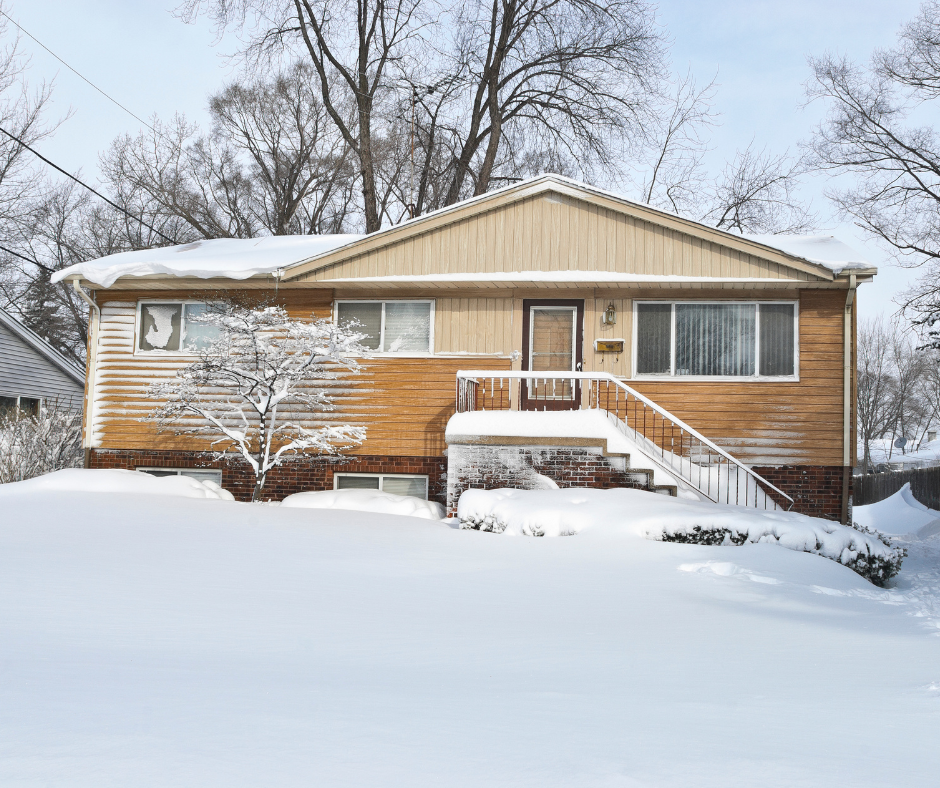
November 20, 2023
As winter approaches, the cold should remind us to prepare our homes for the challenging weather ahead . With the average temperature in January of 14 degrees Fahrenheit and the potential for negative windchills and heavy snowstorms, the winter weather can take a toll on our homes. In order to prevent stress and costly damages associated with cold weather, it’s essential to assess your home and address potential issues before they escalate. Winterizing your home extends beyond braving the cold; it’s a strategic approach to safeguarding your dwelling. Taking steps to winterize can lead to substantial energy savings, reduce your utility bills, and extend the overall lifespan of your house. In this blog post, we’ll explore six budget-friendly DIY tips to winterize your home effectively and keep more money in your pockets during the winter months. Assessing Your Home In Iowa, common issues include cold spots, drafts, and aging heating systems, all of which contribute to increased utility bills. A good practice is to regularly check your insulation. Ensuring it's level in the attic, covering floor joists. The Energystar website is an excellent resource to check attic insulation levels. 2. Home Energy Audit By conducting a home energy audit, you can identify areas for improvement, making a significant impact on efficiency. Follow this step-by-step guide to a home energy audit. Pull your historic and current energy usage Use a calculator, checklist, and basic tools for a budget-friendly assessment Knowing where your home energy is primarily being used enables you to make decisions moving forward. 3. Weatherproofing Weatherproofing is essential for keeping the cold out and the warmth in. Identify drafts and air leaks, and then employ the following strategies: Sealing Drafts and Air Leaks : Utilize weatherstripping kits from a local hardware store and apply caulk to smaller gaps. DIY Door Draft Stoppers: Create stoppers using pool noodles and fabric, hanging them with ribbons for easy door movement. Window Plastic Film: Apply budget-friendly plastic film for added insulation, reducing moisture buildup due to condensation. Thermal curtains: Increase comfort by eliminating drafts and reducing heat loss by up to 65 percent. 4. Heating System Optimization A well-maintained heating system is crucial for a cozy winter. Routine Furnace Maintenance: Prevent breakdowns and save money Air Filter Replacement or Cleaning: Enhance air quality and furnace efficiency. Programmable Thermostats: Control energy usage during specific periods with easy installation options. Ceiling Fan Utilization : Change the fan’s direction to clockwise for winter to distribute heat effectively. No ceiling fan—consider investing in one. 5. Efficient Lighting Upgrade your lighting for energy savings by switching your incandescent bulbs to LED bulbs. LED bulbs use up to 90% less energy and last up to 25 years longer compared to incandescent bulbs. What’s more, their versatility allows them to fit into almost all fixtures. 6. Local Resources and Rebates Explore local resources and rebates for additional savings: Rebates from Energy Providers: Alliant Energy and MidAmerican offer rebates for Iowa customers, sometimes even for having a simple HVAC system tune-up done. Call or check out their websites for more information. Winterizing your home doesn’t have to break the bank. With a few simple tweaks and budget-friendly DIY strategies, you can create a more efficient and functional home for the winter months. Whether it’s sealing drafts, optimizing your heating system, or upgrading to LED lighting, these steps can significantly impact your comfort and savings throughout the winter season. Take action now to prepare your home for the challenges that winter may bring. As always, if a winter project is more than something you can DIY, feel free to schedule a FREE consultation by clicking the schedule button in the lower right corner. For the majority of the projects, we can give you a quote based on the information we receive on a simple phone call and a few pictures.
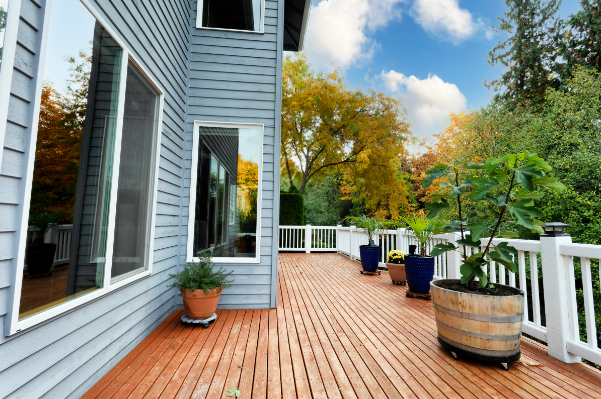
October 9, 2023
That autumn chill is beginning to set in, and winter is fast approaching, whether we like it or not. The harsh winter weather can have damaging effects on your outdoor spaces and furniture if not properly protected. Here are some suggestions to help you safeguard your garden and outdoor spaces this winter. In this blog, we will be covering winterizing your garden, patio or deck, outdoor furniture, and even your lawn. Winterizing Your Garden Once the first hard freeze of fall arrives, it’s time to prepare your garden for the winter. Begin by clearing out the summer remnants—annuals, dead plants, and weeds. For those with a vegetable garden, remove all leaves, stems, fruit, and other plant parts. This will help prevent serious disease and/or pest issues in the years to come. When it comes to perennials, look around for overgrown plants and bushes that may need to be trimmed back. If it’s time to divide your perennials , be sure to do that at least 4 to 6 weeks before the ground freezes. Your plants, shrubs, bushes, and trees, especially newly planted ones, could use some watering so they are better equipped to handle the dry winter weather, and even an occasional watering during the daytime if the temperature is above freezing. Dry conditions can be significantly worse for your plants than the cold winter weather. When the water is absorbed, it plumps up the plant cells and they become more resilient to cold damage by acting as a natural insulator. Rake up leaves that have fallen and recycle them as mulch cover for your plants in the winter months. Mulch insulates the soil, so it remains at a consistent temperature. By covering the plants, it will help keep them from thawing out prematurely in the spring, as the temperature, especially here in Iowa, has a tendency to fluctuate in the early spring. Aim for 2 to 3 inches of thick mulch. If you don’t have enough leaves in your yard, try to use organic material, which not only helps to retain moisture but also adds nutrients to enrich the soil. Lastly, clean and organize your garden tools and equipment. This ensures a smooth transition into the spring growing season. You’ll appreciate what you did once springtime is upon us. Winterizing Your Outdoor Furniture There are many different types of outdoor furniture materials. All of it needs special attention when the winter season starts rolling in. Start by cleaning the outdoor furniture to get all the dirt and dust washed off. For metal and wooden furniture, a cloth, water, and mild, nondetergent soap work well. It’s suggested for plastic outdoor furniture to sprinkle baking soda on a damp sponge. Once your furniture is cleaned and dried, there are additional steps you can take to help protect your investment in the long run. Metal furniture benefits from a layer of oil or grease to serve as a protective barrier by preventing corrosion and rust . As for wooden furniture, allow the wood to dry, and then apply a water-repellent sealant, which is essential to preserve the wood from cracks, warping, and splitting that result from being exposed to moisture. When it comes to protecting plastic outdoor furniture, shield it with a coat of automotive paste wax. Now that your furniture is freshly cleaned and protected against any unwanted moisture, it’s time to find an appropriate storage solution. You may choose to keep it covered outdoors with weatherproof covers or stowed in a garage or storage shed; either decision will ensure to extend the life of your outdoor furnishings. Next, examine your cushions for stains, mildew, and tears. Soapy water and a scrub brush will eliminate those stains right away. If you happen to notice mildew on your cushions, leaving them in the sunlight will help inhibit the mold. For tears, consider a needle and thread. If it is beyond your scope, think about calling a local seamstress to fix it for you. Once cleaned and dried, place the cushions in a dry, cool space to keep them in prime condition for years to come. Winterizing Your Patio or Deck Through the summer, your patio and deck are likely to be used regularly. Autumn is the perfect time to clean up and inspect any damage that may have presented itself during the warmer months of the year. Start by sweeping off the patio or deck or using a leaf blower to be extra efficient. Then give it a good power wash to remove any stuck-on dirt, debris, mold, mildew, or any flaking or peeling old sealant and stain or paint. For a patio, pull any weeds coming up within the patio. Whether you have a concrete or a paver patio, it is important to apply a sealant to help with the effects of the winter freezing and thawing patterns, along with improving the lifespan and appearance for years to come. Similar to patios, wooden decks need proper sealant and stain to protect them from all of nature’s elements. A quick guide to help you apply a sealant and stain to a wooden deck is that once it has had 24 hours to dry from the power washing, it is time to sand the deck. Using 60- to 80-grit sandpaper, be sure to sand the deck as evenly as possible. When the sanding is complete, it’s time to clean the deck one last time to get all the fine sawdust off and focus on the cracks. Then, according to the manufacturer's directions, apply the new stain and sealant. Typically, the best time is on a non-windy day or two where the temperature will be between 50 and 90 degrees Fahrenheit. Composite decking is a mixture of natural wood fibers and recycled plastics, allowing it to be more durable and require less maintenance. All you will need to do is a thorough cleaning and you can keep it in great shape without the need for sealing or staining. Don’t forget to also clean and inspect your pergolas, gazebos, and sheds for any damage that may have happened during summer storms. Winterizing Lawn Care As you prepare your outdoor spaces for the colder months, it’s easy to overlook the importance of winterizing your lawn . By dedicating a little time this fall, you will surely have one of the best lawns in the neighborhood next year. Begin by cleaning up the fallen leaves, either by bagging or mulching them. Fall is also one of the ideal times to aerate your lawn. This is done by creating small holes in the ground to work the soil, reduce compaction, enhance root growth, and improve water absorption. When the grass stops growing, that is a good indication to stop mowing your lawn for the year. If there are some bald or damaged spots on your lawn, now is the prime opportunity to overseed or reseed. Additionally, when choosing a broadleaf herbicide and a region-specific fertilizer for optimal results, follow the label’s directions. This will help your lawn’s overall appearance and health. These guidelines and the extra effort in the fall will go a long way toward protecting your purchases and home aesthetics for the long haul. Winterizing your garden, patio or deck, furniture, and lawn will help ease the transition when spring comes around. For non winterizing improvements or questions, feel free to call or text 319-521-8904 or John’s primary line, 319-389-2257 .
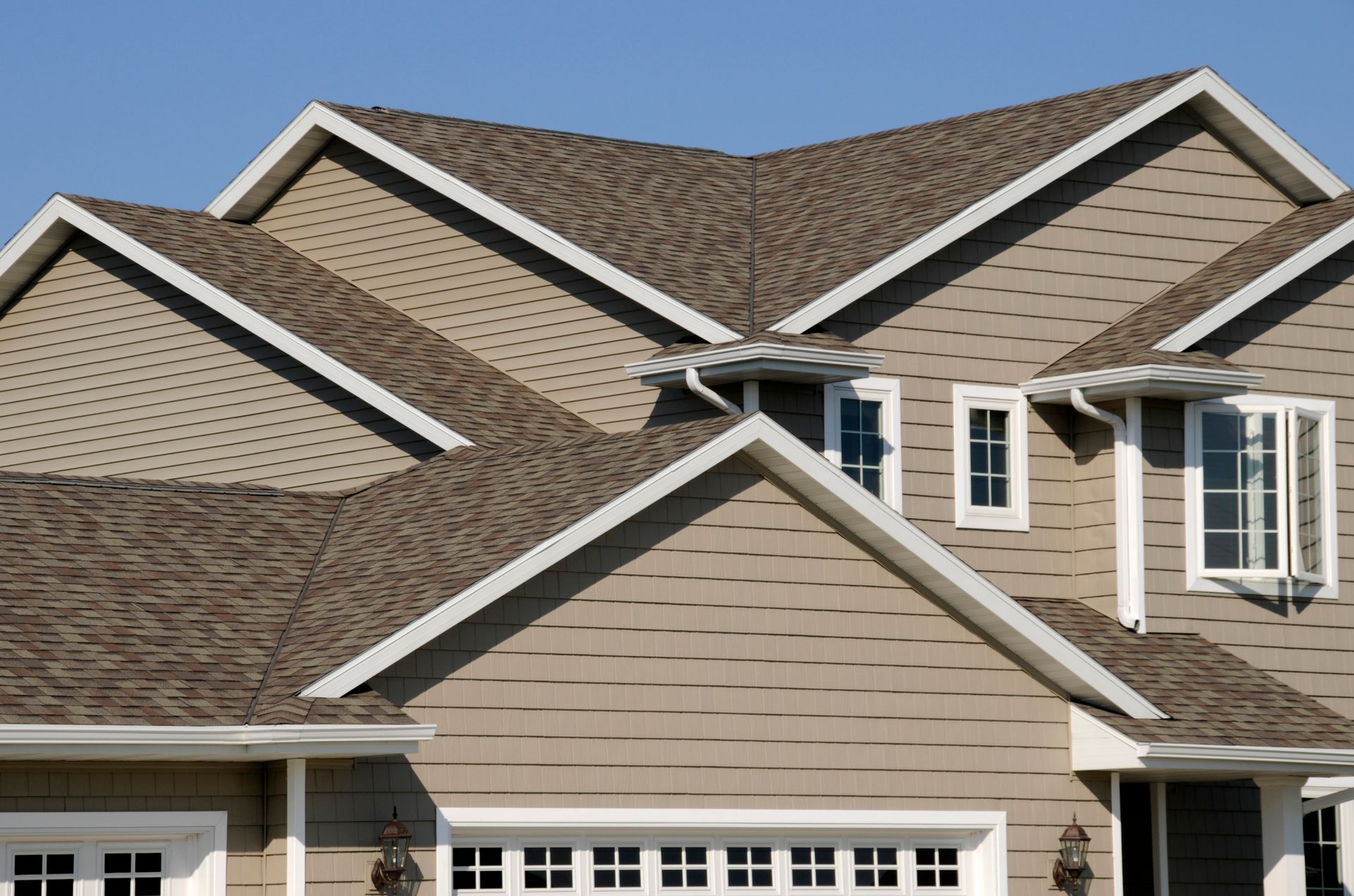
September 27, 2023
Your roof on your home has three major functions to prevent standing water on the roof surface; to protect your home’s interior from rain, snow, wind, hail, and fire; and to provide thermal insulation. So let’s give you some tips to help maintain it so it can continue protecting your home.
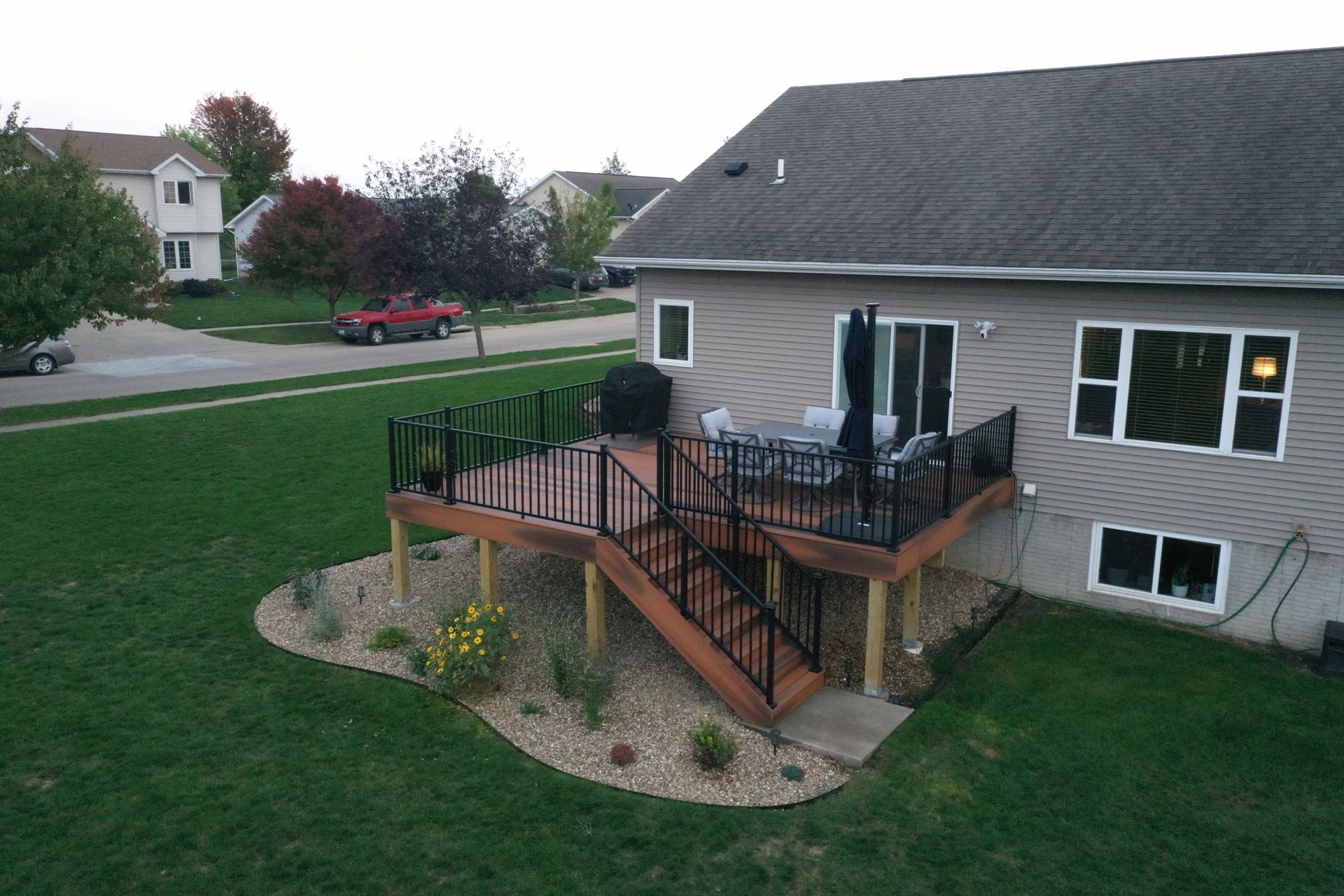
July 5, 2023
Have you been looking for an easy and affordable way to add more space in your home recently? Build a deck! Your home can benefit from adding a deck for several reasons. Here are seven reasons why you should add a deck to your home: Expanding your living space A deck can provide additional living space for your family and guests and is less expensive and time-consuming than many other home improvement projects. It can provide a place to relax, dine, entertain guests, and enjoy the outdoors without having to leave the comfort of your home. Entertainment area Whether you want to host the next barbeque, birthday party, or casual get-together, it can also be a great place for children and pets to enjoy the outdoors. A deck makes a great entertainment space. Added joy to your life In a recent study done by the National Association of Realtors , consumers' had a joy score of 9.8 out of 10 after having a new wood deck project completed! 74% greater desire to be home after the completed project 71% increase of enjoyment when at home after completing the project 66% felt a major sense of accomplishment when they thought of the project Build on uneven terrain A deck can be built on any terrain because it is built on a platform. This makes it the perfect option for narrow spaces and multistory homes. If your home has a beautiful, scenic view, a deck is a wonderful addition to enjoy the view from the outdoors. Customization There are many ways to customize your deck to make it your own and to suit all your needs. Try adding a pergola, a checkerboard-patterned painted floor, even a built-in banquet, or a dual-level deck for separate seating areas. Building process is fast and easy This is an easy way to increase your home’s usable square footage without the time and cost of a full addition. There won’t be a significant lifestyle adjustment that would come with adding a home addition since the majority of the work is done outdoors, which would cause fewer inconveniences to you and your family during the building process. Return on investment By improving your property, your home's value increases. According to the 2023 Remodel Impact Report , you could recover 89% of the value of a deck project. If you decide to sell your home in the future. Build your next deck with Sunrise Builders! Now that you have read all the numerous benefits a deck can provide a homeowner and you reside in the Cedar Rapids/Iowa City area, give John a call at (319) 389-2257 to start your durable, high-quality deck project and obtain a free consultation . We would love to help you create the outdoor space of your dreams!
BROWSE OUR WEBSITE
CONTACT INFORMATION
Office(operator my vary): 319-521-8904
John's direct line: 319-521-8904
Email: sunrisebuildersia@gmail.com
Address: 1120 Depot LN SE #100
Cedar Rapids, IA 52401
Sunrise Builders proudly serves Cedar Rapids & surrounding areas.
Business Hours
- Mon - Fri
- -
- Sat - Sun
- Closed
License no. C3195218904






Content, including images, displayed on this website is protected by copyright laws. Downloading, republication, retransmission or reproduction of content on this website is strictly prohibited. Terms of Use
| Privacy Policy

